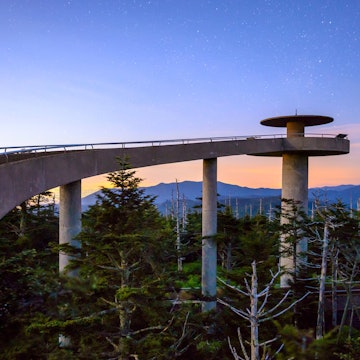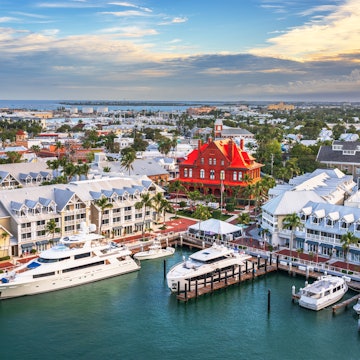
Road trip: Toulouse and the architecture of southwest France

Oct 11, 2016 • 6 min read

The pink hue of the Romanesque Basilique St-Sernin in Toulouse. Anibal Trejo / Shutterstock
Southwest France is chock-full of crumbling abbeys, medieval villages and Gothic churches that blush gold in the sunlight – you just have to know where to look.
Setting out from the pink city of Toulouse, this road trip itinerary takes in the best of France by car: 10 centuries of compelling architecture; easy, scenic drives; historic hotels; and ample time for rich Gers cuisine and wine along the way.
Day 1: admire the sacred sights of Toulouse
Start at the spires of La Ville Rose (The Pink City). A profusion of pink marble and rosy bricks have given Toulouse an unforgettable skyline, and one of its standouts is the Romanesque Basilique St-Sernin, one of Europe’s largest Romanesque churches.
The octagonal bell-tower of this 11th-century masterpiece became the blueprint for churches built in the surrounding Gers region. Step into the church and stroll around the ambulatory, beneath the watchful gaze of marble cherubs, before descending into the vaulted crypt. Numerous holy relics here cemented the basilica’s importance as a stop on the French Way of St James pilgrimage route.
Swing east along Rue du Périgord for a detour to the Marché Victor Hugo. This food market brims with dried sausage, cheeses, ripe-to-bursting tomatoes and ready-to-eat international cuisine. The best produce is cooked up at restaurants on its upper level (arrive early to secure a table).
Belly full, head south out of the market along Rue du Rempart Villeneuve before walking west along Rue Lafayette. Soon enough you’ll spy Place du Capitole, home to Toulouse’s 18th-century city hall. Continue west and duck south down Rue Lakanal, which leads to the Couvent des Jacobins. This grand complex with peach-coloured cloisters took decades to build, its first bricks laid in 1230 and the chapel finally completed in the 1340s. More than eight centuries later, it remains at the heart of the region’s religious life.
Where to sleep: Vintage glamour infuses the Grand Hôtel de l'Opéra, from its blood-red wallpaper to the antique furnishings, while ornate masks and glitzy chandeliers live up to its theatrical name.
Day 2: step through history in Auch
Leave vibrant Toulouse in your rear-view mirror and drive west towards the placid town of Auch. It’s an easy 80km journey along the N124, passing meadows strewn with hay bales.
The town’s centrepiece is the Cathédrale Ste-Marie. This twin-towered masterpiece took two centuries to build, so its architectural flourishes range from Gothic to Renaissance. Most impressive is its choir. Saints and philosophers are carved in wood and a set of 18 stained-glass windows dating to the 15th century sparkle above. Reward your introspective visit to the cathedral by ambling across Pont du Prieuré and walking north to Bistro La Patte d’Oie. This great-value lunch place serves melt-in-the-mouth cuisse de canard confite (duck leg cooked in its own fat) and other time-tested regional dishes.
Back on the west bank, follow riverside Boulevard Carnot south towards the Escalier Monumental. This Baroque outdoor walkway has an impressive 374 steps, if you count both sides of the double staircase. As you walk the stairs, admire the Tour d’Armagnac, a former seat of power for the counts who held sway here in the 14th century. Also note a statue of semi-mythical D’Artagnan, who was romanticised in Alexandre Dumas’ novel The Three Musketeers, and contemporary sculpture by Catalan artist Jaume Plensa.
Where to sleep: Auch’s most glamorous place to stay is the Hôtel de France, a 300-year-old hotel mere moments from the cathedral, replete with stained glass windows, wrought-iron railings and an outstanding restaurant.

Day 3: steep yourself in medieval history near Valence-sur-Baïse
Take the northbound D930 from Auch for 33 tree-lined kilometres until you reach tiny Valence-sur-Baïse, with Abbaye de Flaran at its northern edge. Built in the 12th century, this stately Cistercian abbey has seen numerous attacks, suffering enormous damage during the bitter Hundred Years’ War between England and France. Now faithfully rebuilt, the cloisters of this sandstone sanctuary enclose a serene courtyard.
Next, drive north out of Valence-sur-Baïse along the D142, passing through Cassaigne before joining the D278 towards Larressingle, France’s smallest fortified town. With its rectangular turrets, Larressingle looks almost like a castle made of Lego. March over the stone bridge and through its single archway, and picture yourself firing arrows from the town walls. If you have kids, test their trebuchet skills at the family-friendly Camp de Siège Médiéval, a gaming zone themed around medieval warfare.
Where to sleep: Barely 500m north of Larressingle, surrounded by acres of rose-draped gardens, Lacassagne has stylish rooms and lounges with fireplaces, within a country manor filled with antiques.

Day 4: see Gothic splendour in Condom
The prosaic origins of Condom’s name – a contraction of ‘Condatomagus’, a market town between two rivers – haven’t stopped visitors taking selfies with the road signs. But though you might stifle a giggle at its name, this town of cobbled lanes and timeworn shopfronts, 6km east of Larressingle, will leave you impressed.
Its centrepiece is the Cathédrale St-Pierre, a flamboyant Gothic edifice with attached cloisters. One of the last buildings to be crafted in Gothic style in the Gers region, this 15th-century building boasts a 40m tower and glittering stained-glass windows. Within, bone-coloured arches and intricate tracery complete the imposing effect.
Streets flowing from the cathedral square feature hôtels particuliers (stately townhouses) from the 18th century. They’re easy to spot by their decorative balustrades, ornamental windows and the occasional family crest carved in stone; find several privately-owned homes along main drag Avenue de Gaulle.
Not all the historic buildings are off-limits to visitors. On Rue Jules Ferry, behind the cathedral, stands the Musée de l’Armagnac, a temple to the region’s beloved brandy with a 19th-century grape press on display. The brandy continues to be lovingly distilled from wine in oaken barrels at countless chateaux in the countryside. Armagnac tastings are offered at the museum, and you might want to pick up a bottle or three.
Where to sleep: Within an authentic 18th-century hôtel particulier, Les Trois Lys offers 12 rooms, the best of them with regal crimson colour schemes, high ceilings and huge windows. Dine on Gascon specialities alfresco at the on-site restaurant.
Day 5: conquer the fortified town of Montauban
Drive east out of Condom along the D7, a 100km journey that passes in a blur of birch trees and wide open farmland. Here, the hectic modern town of Montauban surrounds one of the region’s most admirable bastides (fortified new towns).
With arcades and stocky protective walls, Montauban’s bastide barely seems to have changed since medieval times. So successful were the defensive walls that the town famously held off invaders for a full 86 days during a 17th-century siege.
The rumble of cannons has long been silenced, and Montauban’s old town is now a jolly place where delicatessens brim with homemade preserves and brasseries dish up heavy plates of duck confit. At its heart is Place Nationale, enclosed by brick archways that now frame cafes and bars.
Stroll along Rue Malcousinat, from the square’s southwest corner, before turning right on Rue de la République (both streets are flanked by magnificent brick mansions) and you’ll reach Église Saint-Jacques. This russet 13th-century church has a striking octagonal bell-tower, reminiscent of St-Sernin in Toulouse – to where you’ll soon return. Lament the end of your trip at La Cave Ô Délices, a five-minute walk southeast, over pan-seared local fish and slate boards showcasing thoughtful arrangements of charcuterie and cheese.
Where to sleep: Stay the night northeast of town in Chateau Mezger. This elegant guesthouse with contemporary rooms snoozes in a quiet country setting – it’s a restful final stop before the return drive to Toulouse.
https://shop.lonelyplanet.com/products/france-travel-guide-13















